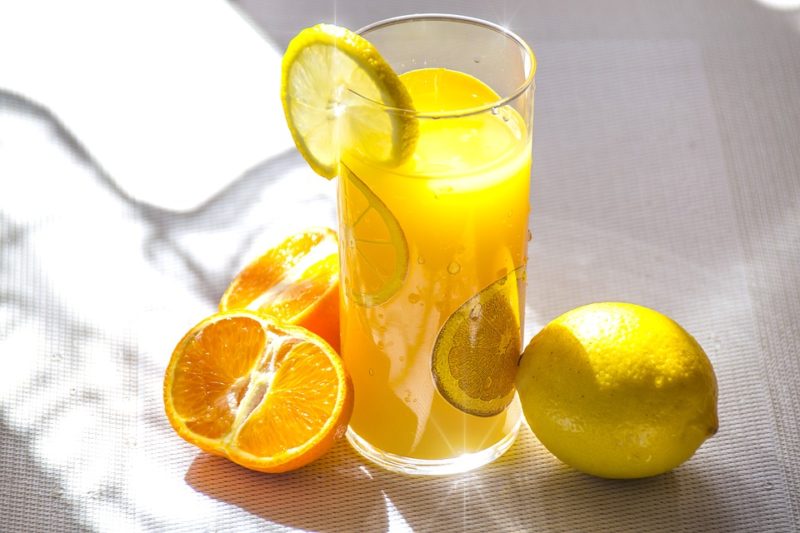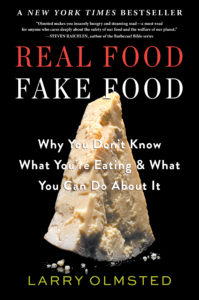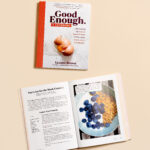Juicing is an enduring trend in our health-conscious society, with new juice brands, bars, and cleanses seemingly proliferating on a daily basis. Yet, not all juices are created equal. In his acclaimed bestselling book Real Food/Fake Food: Why You Don’t Know What You’re Eating and What You Can Do About It, Larry Olmsted shares the startling fact that fruit juices are one of the most commonly faked food items. What gives? Olmsted explains.

Image credit: Juicerkings.com
In Real Food/Fake Food, you write that fruit juice is commonly faked, revealing that both apple juice and orange juice are included on the Food Fraud Initiative’s top ten list of most commonly faked items. How is that possible?
The first problem is pure fraud. Fruit juices are relatively expensive and easily cut with cheaper substances. Sometimes they are simply real juice diluted with water, sometimes they are not juice at all but rather water, artificial colors and sweeteners–literally “fake juice”–while many historic examples fall in between and often include cheaper fruit juices. Orange juice has been found to contain unlisted ingredients such as cheaper lemon juice, mandarin juice, grapefruit juice, high fructose corn sugar, paprika extract and beet sugar. Apple juice has been cut with grape juice, corn syrup, pear juice, pineapple juice fig juice, malic acid and so on. In addition, almost all of the apple juice consumed in this country is made from concentrate in China, where apples have been found to have been treated with banned pesticides and fertilizers. Apple juice is also the most common ingredient, along with grape juice in fruit juice blends. This is where it moves from fraud to deception: you buy a bottle labeled blueberry banana juice that says 100% fruit juice on the label and has pictures of just blueberries and bananas, but chances are good that either apple or grape is the main ingredient–and that is legal. In one case a Pomegranate-Blueberry juice had just 0.3% pomegranate, which happens to be the most expensive juice.
Is fakery symptomatic of the bottled juice industry, or is it also present in the fresh squeezed juice bars and cleanses that have popped up across the country in recent years?
Historically it is more common in the packaged (bottled, boxes, cans, concentrates) juice business, but juice and smoothie bars are a recent phenomenon that haven’t really been studied. However, the restaurant industry has typically been guiltier of fraud and fakery than retailers across the scope of Fake Food, and it would shock me if fresh squeezed juices were not cut with cheaper items, because it’s too easy, too tempting, too profitable and these conditions always lead to food fraud. To paraphrase what a former FDA Commissioner told me, “if there’s an expensive food you can sell a cheaper version of there’s going to be fraud.” Period. Also, restaurants don’t have to list ingredients or even have accurate menu claims, and are rarely penalized for serving fakes, and smoothies often have non-listed items like yogurt. It’s not necessarily bad, but just yesterday I was in a breakfast place and asked what was in the banana-blueberry smoothie and they told me bananas, blueberries, yogurt and ice, which when ground in a smoothie is just cold water, but it didn’t say banana-blueberry-yogurt-water it just listed the fruit.
What are the consequences of drinking fake juice?
Mostly it is what the industry calls an economic cheat where you are getting ripped off by overpaying for something you are not getting. It’s also a nutritional cheat. If you are someone who wants to avoid high fructose corn sugar and consider it unhealthy, adding that secretly is a health cheat. In a small number of cases it can also be dangerous–the Congressional Research Service reported as recently as 2014 that its juice investigations had found toxic mold in juices from abroad, including China, along with banned pesticides. And in any Fake Food with unlisted ingredient additions and substitutions you have the issue of allergic reactions.
What are some measures the general public can take to identify and avoid purchasing fake juice in the future?
Like so many other Fake Foods you generally can’t be fooled if you see foods in their whole form–it’s much better to make your own juice from fruit. I do this for lunch with smoothies, frozen bananas, strawberries, blueberries. You can avoid marketing/labeling deceptions simply by ignoring the front label claims and pictures and reading the ingredient list. This is printed in order of volume, so if you buy blueberry cranberry juice and the first thing listed is white grape or apple juice, put it back on the shelf. If the only ingredients are blueberry and cranberry juice you are in good shape, unless there is outright counterfeiting which you cannot really protect against. Also, remember that 100% juice or 100% fruit does not mean the same as 100% cranberry juice–again always check the ingredients list carefully. I heard a consumer advocate say that when it comes to food claims “The big print giveth and the small print taketh away” and that’s a good way to view the front and back of supermarket products–not just juice.
What’s your verdict: is juice underrated or overrated?
I’m a fan of whole foods and believe you get more nutritional bag for the buck eating an orange than drinking its juice–think of everything that gets left behind. But that being said, I like the way juice tastes, and I especially like pineapple juice, which is more of a hassle to make yourself. And it’s all relative–I think eating fruit is better than drinking it, but drinking juice is better than drinking soda or energy drinks. It’s definitely not underrated but it’s probably not that overrated, though I won’t drink apple juice any more–that’s an overrated juice.
For more from Larry Olmsted, check out his New York Times-bestselling book!
 About the Book:
About the Book:
You’ve seen the headlines: Parmesan cheese made from wood pulp. Lobster rolls containing no lobster at all. Extra-virgin olive oil that isn’t. So many fake foods are in our supermarkets, our restaurants, and our kitchen cabinets that it’s hard to know what we’re eating anymore. In Real Food / Fake Food, award-winning journalist Larry Olmsted convinces us why real food matters and empowers consumers to make smarter choices.
Olmsted brings readers into the unregulated food industry, revealing the shocking deception that extends from high-end foods like olive oil, wine, and Kobe beef to everyday staples such as coffee, honey, juice, and cheese. It’s a massive bait and switch in which counterfeiting is rampant and in which the consumer ultimately pays the price.
But Olmsted does more than show us what foods to avoid. A bona fide gourmand, he travels to the sources of the real stuff to help us recognize what to look for, eat, and savor: genuine Parmigiano-Reggiano from Italy, fresh-caught grouper from Florida, authentic port from Portugal. Real foods that are grown, raised, produced, and prepared with care by masters of their craft. Part cautionary tale, part culinary crusade, Real Food / Fake Food is addictively readable, mouthwateringly enjoyable, and utterly relevant.
Buy the Book
Amazon | B&N | Indiebound | Workman




3 Comments
Aaliyah
September 10, 2018 at 3:09 amI tried the passion fruit one. I wish that it came in a bigger bottle though, because I can finish 900ml in no time! It tastes amazing and I love that it’s organic with no sugar added. Will definitely buy this! Also had another best tasting juice which is jus amazing….you can also check this.https://www.houseofchi.com/brands/
Mathew Barnes
September 8, 2020 at 7:01 amThanks for the help. I like it so much that my whole family told me to give them too. The family who hated carrots told me to make carrot juice.
smith
December 14, 2020 at 7:02 amthank you for sharing your knowledge…..